Why do cats love boxes and bags?
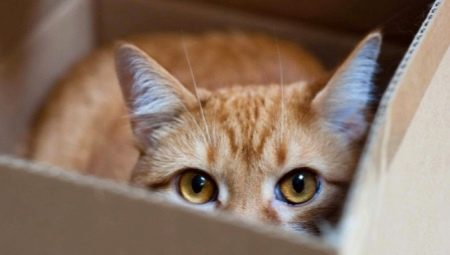
Every breeder of fluffy pets has noticed their genuine interest in boxes and bags more than once. Often, cats are not interested in the contents, but in the packaging itself, which delights and takes all the attention. What may be the reason for this interest, why cats love boxes and often use them for sleeping, the material of this article will tell.
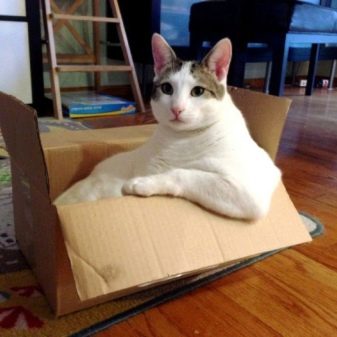
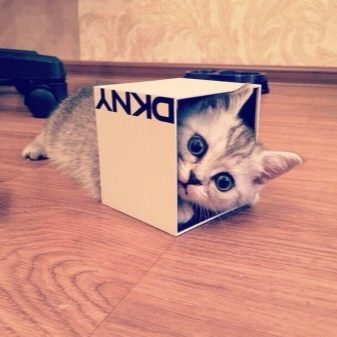
What is interesting about them?
Often, cat owners are faced with the fact that pets remain indifferent to expensive beds and playgrounds. It is difficult for an average person to understand how you can exchange a good thing for a simple and sometimes even boring object. However, cats have their own opinion on this matter. Scientists have found that an animal can relate to boxes and bags in different ways. At the same time, it rarely leaves such things unattended.
Plain packaging can find many uses for a cat. Today it is a means of active recreation, tomorrow - a secluded place, during the day it can become material for research. The reason for the different interest may lie in the pet's mood. It is this that is the factor that determines the purpose of the object.
And cats are not just interested in boxes - they need them.

What do you like about boxes?
A cardboard box in the eyes of a cat can become a shelter or object for play. Often, cat owners use this packaging to create large playgrounds. However, it is not at all necessary for the cat that the box be lined with warm material. If she likes it, it will be a favorite subject, taking up a lot of free time.
The smell of childhood
Someone thinks that the reason for the interest may lie in the relationship between cardboard and wood. It is likely that the cat smells the native smell of the wild. However, a more plausible version is her childhood memory: as a kitten, she was with her mother in a cozy box. Therefore, it can remember the smell.
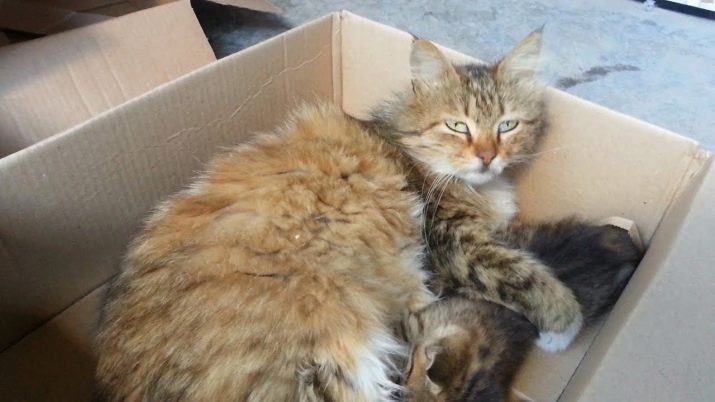
If the animal climbs into the box and, purring, fiddles with its litter for a long time, fingering with its paws, it is so. This instinct has been established in cats since childhood. This behavior is typical of small kittens falling asleep near the cat. This tranquility, a sense of protection and absolute peace, this is what the cat has been looking for all his life. Some cats behave in a similar way before going to bed.
Social factor
In addition, the box can become a kind of cocoon that protects the cat from stress. This fact is evidenced by studies of scientists working with domestic cats in shelters. A cat without shelter feels unprotected, it is prone to stress and has poor contact with people.
Hiding behavior helps the animal to take shelter from what it may fear.
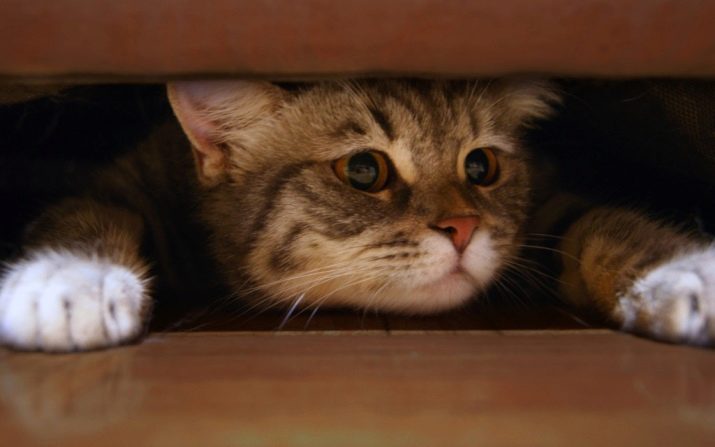
If the pet does not have its own place, it is likely that the box will perform exactly this function.... Other cats occasionally use boxes as a social barrier. Hiding in it, they feel protected from the reprimands of the owner, shouting or noise. These situations are rare, only in the absence of another secluded place, the cat will hide in a box.
Toy box
The look of an active cat rarely misses small boxes, mailboxes. Small objects become antistress toys, large ones become shelters in which you can hide, tracking down prey. Funny pets believe that they are not visible in the boxes. They get a colossal discharge in the process of games, scratching, biting or tossing objects from place to place.
It is not uncommon for cats to spend a lot of energy chewing boxes. Such activity is necessary to waste excess energy, after which the pets are tuned in to a sweet dream.
Some individuals manage to stick their muzzles into narrow boxes, and this does not bother them at all. In their games, they rarely set boundaries for themselves.

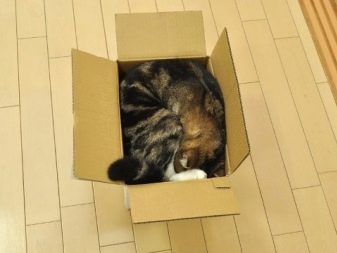
Cardboard is used to make scratching posts. He does not injure the animal when he wants to scratch his claws, and allows him to "break away" in a burst of active games. Some individuals flirt to the point that they gnaw holes in the boxes, biting paper with delight. They are sensitive to rustling sounds and are happy to create them themselves by scratching and biting cardboard boxes.
Physiology
Cats are considered animals that love different burrows. They like to guard their prey, sitting in ambush, and therefore often even hide in a closet or cabinets. Animals are very quick-witted, they can watch or track something for a long time, and some, on the contrary, completely relax to the point that they fall asleep, finding themselves in a secluded place. The conclusion about craving for different burrows was made by scientists for a long time, while research was carried out on the basis of the habits of many animals.

Pets love boxes, from which the owners make improvised houses, carving out round entrances to "holes". If, at the same time, you connect a couple of objects with a common manhole, such a toy will be appreciated better than an expensive lounger. The cat will be inside its labyrinth, being in complete confidence that it is invisible, and also using the boxes as a private space.
In general, the craving for boxes and bags is explained by vibrissae. Tactile touching of objects (especially rustling ones) attracts cats... Thanks to the mustache, they receive information about things, but not every subject lends itself to rapid study. Cats gnaw boxes only when they examine them with vibrissae, receiving information that objects are inanimate (animals do not eat anything living, even mice are initially killed so that they cannot bite them at a meal).
The rustling is pleasant to cats, it vaguely resembles the vibrations from mouse paws, reaching the brain through the whiskers. It is for this reason that they touch the bags and boxes with vibrissas. Moreover, each type of mustache gives its own assessment of a certain thing. The vibrissae on the paws may evaluate the box as an object from childhood, those located on the muzzle may indicate that this is a product for play.
Other hairs will tell you that the box can be perceived as a lounger.

Alternative to the sunbed
A cat, accustomed from its youngest claws to its place, very quickly realizes that it is a corner in which no one will touch it. In addition to the fact that sometimes she needs personal space, she may just like the new impromptu "house". There are times when two cats living together share a similar “house”.
And here, if there is no friendship, a joke or simple curiosity can develop into rivalry. As a result, the reclaimed toy box becomes a principal stove bench. If desired, the box can be nibbled and used as a scratching post. The box will be what the mood dictates at the moment, and the cat rarely thinks about its safety (according to the principle “my box, what I want, I do it”).
Why do they gnaw packages?
Polyethylene packaging attracts pets no less than cardboard. There are times when a pet furiously tears a plastic bag with his teeth. This does not mean at all that he lacks any substances or that he is sick. Not at all: in case of illness, vitamin deficiency or poor health, the cat is not interested in the package. The animal entertains itself in this way, because, you must admit, often the owner pays too little attention to her.
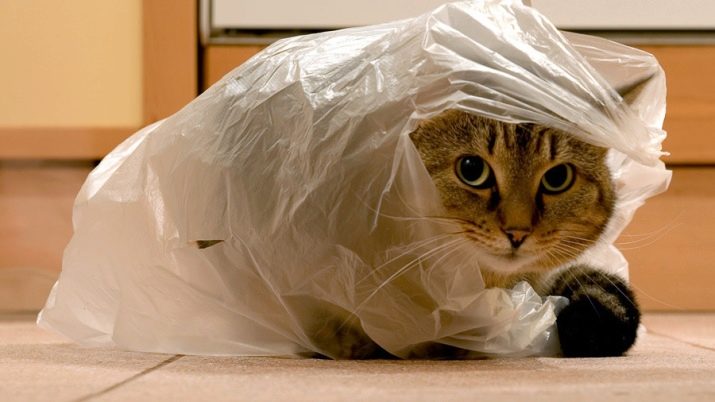
The cat begins its game with rustling and often with tossing the package. While entertaining herself, she can succumb to her predatory instincts, like when she plays with a mouse. Others like the way their claws dig into the plastic. If the cat chews or even eats the bag in earnest, most likely there was something edible in it, from which there was a luring smell for it. For the same reason, the cat licks the bags.
Why play with cellophane?
By nature, cats are extremely curious and interested in everything. They like the rustling sound, some members of the family like to inspect every package they see in the house. They can climb into them, sit inside for a long time and sincerely take offense when they are scolded for it. Feline nature is such that furry pets look at everything in their own way. Sometimes breeders jokingly note that their pets were born in bags - they are so tempting to them. Moreover, cats sometimes not only play with bags, but even go to sleep in them.
Plastic bags are different from conventional toys. During the game, they not only rustle, but also magnetize the wool, in contact with it. Cats love everything unusual, giving free rein to instincts. In addition, the sound of a rustling packet may be associated with a call to hunt.
Being in a playful state, the cat can play along with himself, tossing the bag or trying to touch it as often as possible in order to hear interesting rustling again and again.
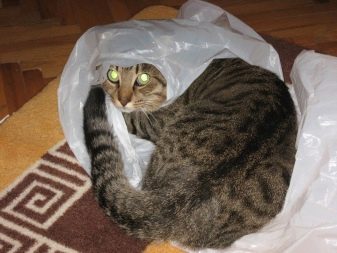
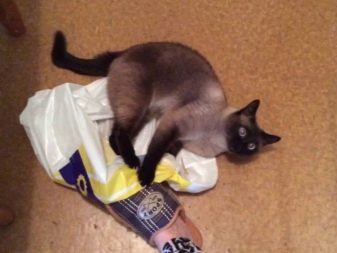
They love pets and paper bags. They will gladly climb into them, like into boxes. While exploring this subject, they do not forget to note for themselves what was in it. If there was something tasty in it, the pet can get distracted from the game and look for the source of the smell. However, it is not uncommon for a cat to quickly switch to play again, because she is characterized by a rapid change in mood.
Sometimes the package becomes an impromptu hideaway while playing. The cat is sure that he is safely hidden and invisible to the owner. At the most opportune moment, he goes on the attack, sticking out a fluffy paw from the bag and tenaciously grabbing the "prey". The bags make good bow toys that both kittens and adult cats like. However, during the game, you need to keep an eye on the animal so that in its curiosity it does not go too far.Do not allow pieces of a package or box to get into the stomach of a nimble hunter.
Video answer to the question why cats love boxes, see below.
































